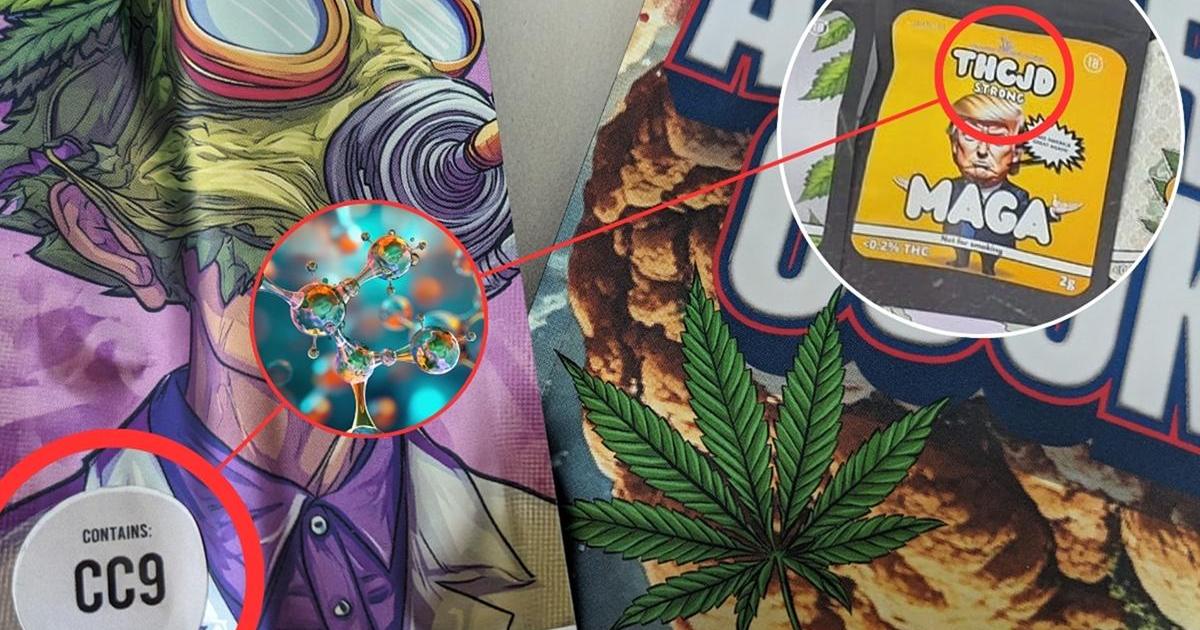Earlier this month, the doctors’ union warned that seven people had been hospitalised with vomiting, vision problems and liver damage after consuming a “dangerous” edible product designed to mimic the effects of cannabis.
The product the Medical Association of Malta warned about contained a compound called CC9, a semi-synthetic cannabinoid.
But what are synthetic cannabinoids? And should consumers be worried about them?
Cannabinoids are chemicals found in cannabis plants and many animals, with Tetrahydrocannabinol (THC) and Cannabidiol (CBD), both naturally occurring in cannabis plants, among the two most well known.
While not all cannabinoids are psychoactive – CBD, for example, is often instead used for medicinal purposes – others like THC, associated with the ‘high’ brought on by smoking cannabis, are.
These chemicals affect the body by interacting with the body’s endocannabinoid system, a complex cell-signalling system involved in regulating a host of bodily processes including mood, diet, sleep and stress.
This system can also be stimulated by foods such as dark chocolate and some herbs and spices and by exercise; the ‘runner’s high’, a euphoric state often reported by runners after intense activity, is partly thought to be the effect of exercise on the endocannabinoid system.
James Cummings explains what CC9 is. Video: Karl Andrew Micallef
Synthetic cannabinoids
Synthetic cannabinoids, meanwhile, are man-made and designed to mimic the psychoactive effects of THC and other naturally occurring cannabinoids – or produce stronger or new effects altogether.
Many lack regulatory oversight, however, meaning their strength and purity cannot be guaranteed. And their relatively recent emergence onto the market means little is often known about them.
The way synthetic cannabinoid products are produced – such as by spraying plant material with chemicals – can lead to some batches of a product being stronger than others, while the largely unregulated nature of the chemicals can expose users to products of a higher-than-expected potency or cause unintended effects. According to the European Union Drugs Agency (EUDA), many of the synthetic cannabinoids sold on the drug market are more potent than THC, which it said could lead to “severe and fatal poisoning”.
“The potential for outbreaks of intoxication and other harms posed by these substances highlights the importance of maintaining and strengthening the identification, reporting and monitoring of any serious adverse events associated with their use.”
Regulation
While the risks associated with using synthetic cannabinoids have become more widely known in recent years, manufacturers are often one step ahead of regulators, creating new synthetic cannabinoids as others are blocked from the market.
Since Malta banned semi-synthetic cannabinoid Hexahydrocannabinol (HHC) last year, for example, other chemicals have rushed in to fill the gap; in a recent visit to one St Julian’s shop, Times of Malta found numerous products for sale containing synthetics CC9 and THCJD.
But this could be about to change.
Earlier this month, junior minister Rebecca Buttigieg outlined several legislative changes in relation to cannabis, proposing its legal definition should include THC and CBD while stressing the need to “eliminate the ambiguity in the current law”.
Buttigieg said the changes would also seek to block synthetic or semi-synthetic cannabinoids from entering the market, while giving the responsible minister the power to update the definition to reflect new synthetics flagged by the Authority for the Responsible Use of Cannabis (ARUC).
Only time will tell if the proposed changes put an end to the risky cat-and-mouse game between regulators and manufacturers.
Seven people were hospitalised after eating CC9 edibles. What is CC9 and why does it matter? Read More


